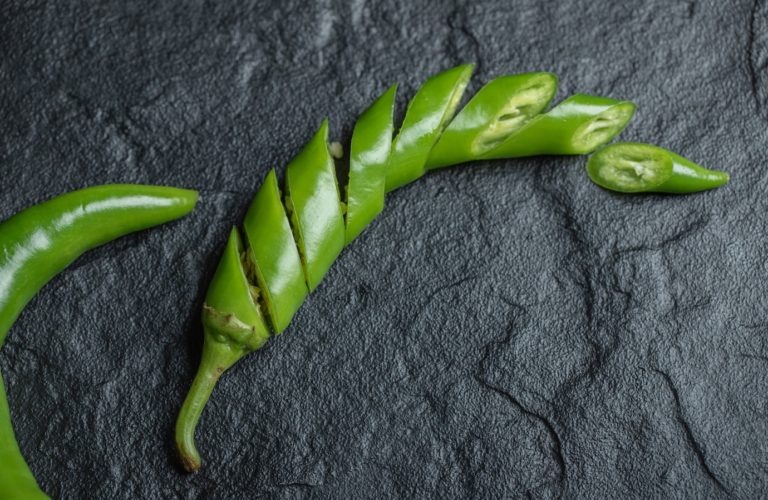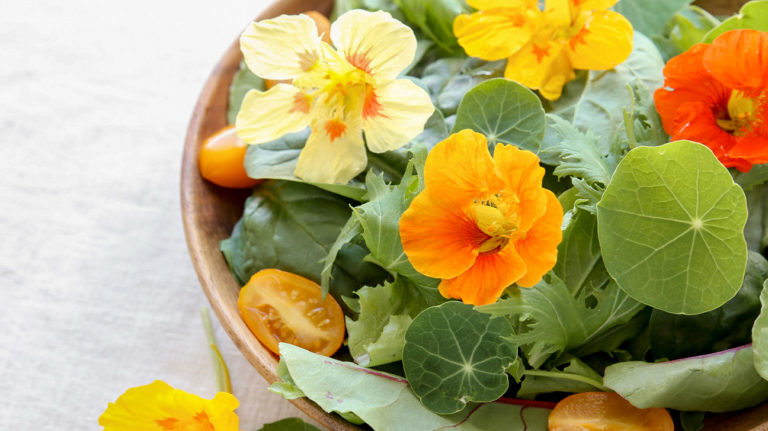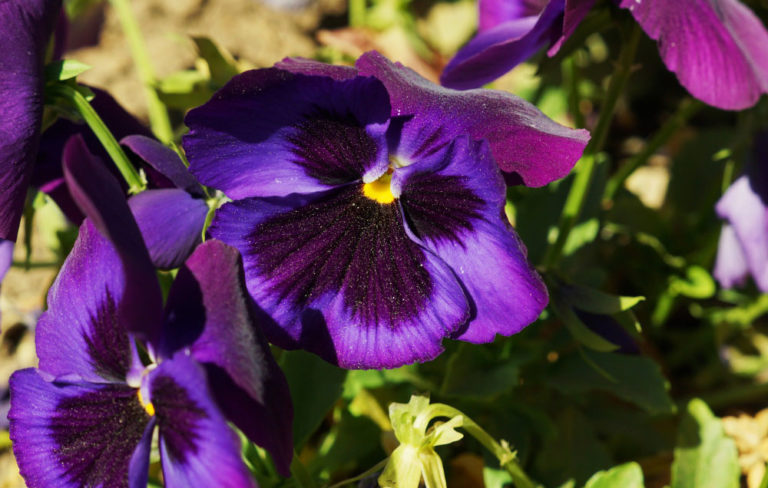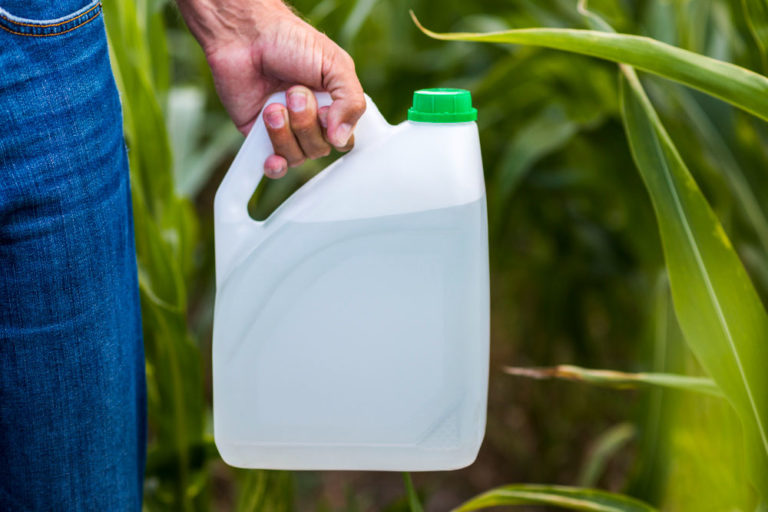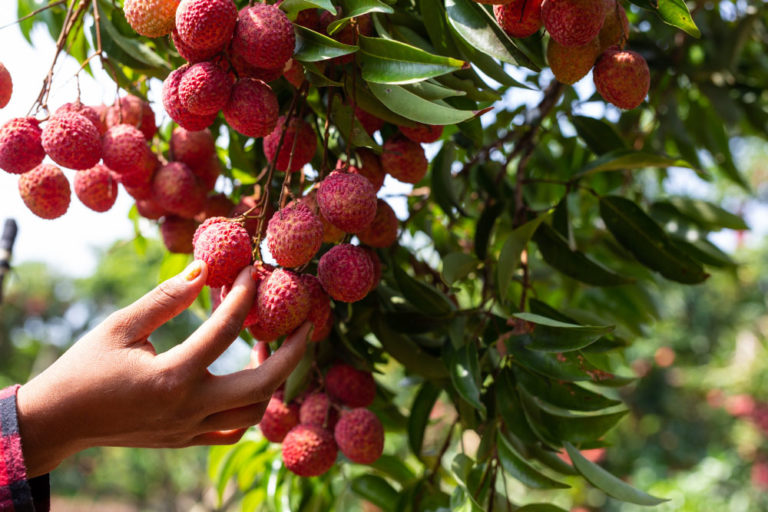How To Grow And Care For Ornamental Cabbage Plants
Ornamental cabbage, also known as flowering kale, is a beautiful addition to any garden. These plants come in various colors, including white, pink, and purple. Ornamental cabbage is a low-maintenance plant that is relatively easy to grow.
You can enjoy these beautiful plants in your garden for many years. Cabbage is a cool-weather crop that can be planted in early spring or late summer, depending on the weather in your area.
Ornamental cabbage is the term used for types with broad, flat leaves that are edged in a contrasting color.
While ornamental cabbage and kale are edible, they tend to have a bitter flavor and are often used in a culinary setting as garnishes.
Until it gets cool, the plants won’t have much color. The white, pink or red pigments really begin to show with frost and cold weather, getting great, vivid colors below 50°F. They really are cool-weather plants, and once acclimated they can survive temperatures as low as 5°F, so they may last well into November and December.
Types of ornamental cabbages
‘Osaka Red’ (Brassica oleracea ‘Osaka Red’)
Brassica oleracea ‘Osaka Red’ is popular in Japan. It is characterized by its large, round head and deep red color. When plain, ‘Osaka Red’ leaves have a crisp texture and a slightly sweet flavor. ‘Osaka Red’ is typically grown in the fall and winter and can be eaten raw or cooked.
‘Osaka Red’ is a good source of vitamins A and C and dietary fiber. It is used in various recipes, including stir-fries, soups, and salads. When cooked, the leaves become tender and take on a milder flavor.

‘Pigeon Red’ (Brassica oleracea ‘Pigeon Red’)
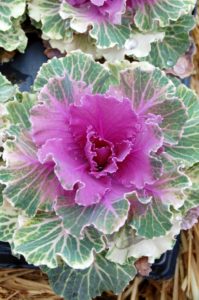
Brassica oleracea ‘Pigeon Red’ is a cool-season annual that belongs to the mustard family. It is also known as red, Chinese, or leaf mustard. ‘Pigeon Red’ is often used as a garnish or as a colorful addition to salads. It has a slightly bitter taste and can add some spice to dishes.
The plant is easy to grow and does not require much care. It can be sown directly in the ground, started indoors, and then transplanted outdoors. ‘Pigeon Red’ prefers full sun but will tolerate some shade. It can be grown in most types of soil but prefers well-drained soil. The plant is somewhat drought tolerant but will produce more leaves if given regular watering.
‘Pigeon Red’ is generally free of pests and diseases. It does not require much fertilizer but will benefit from a boost of compost or manure before planting.
‘Color-Up Pink’ (Brassica oleracea ‘Color-Up Pink’)
One of the most eye-catching and unique varieties of Brassica oleracea is ‘Color-Up Pink.’ As the name suggests, this plant has vibrant pink leaves. ‘Color-Up Pink’ is a cool weather plant that thrives in cooler temperatures.
‘Color-Up Pink’ is a relatively new variety and is not yet widely available. It is a fast-growing plant that can reach up to 18 inches. The leaves of ‘Color-Up Pink’ are slightly different from other varieties of Brassica oleracea. They are thinner and more delicate and have a slightly wavy margin. The edges of the leaves are also tinged with pink, giving them a distinctive appearance.
‘Condor’ (Brassica oleracea ‘Condor’)
Brassica oleracea ‘Condor’ is a popular type of cabbage that is known for its large, rounded head. The leaves are dark green and have a crisp texture. ‘Condor’ is a good choice for both cooked and raw dishes. When cooked, it has a mild flavor that goes well with other ingredients. When raw, it can be used in salads or as a crunchy topping for sandwiches.
‘Condor’ is a relatively easy vegetable to grow and can be started from seed or transplanted from a nursery. It prefers full sun and moist, well-drained soil. With proper care, it will produce heads of cabbage that weigh up to 2 pounds.
‘Pigeon White’ (Brassica oleracea ‘Pigeon White’)
Pigeon white is a type of Brassica oleracea that includes several other common vegetables, such as cabbage, broccoli, and kale. The plant is native to Europe but has been naturalized in many other parts of the world. Pigeon white is a hardy plant that can tolerate cold winters and hot summers. It grows best in full sun, but it also does well in partial shade.
‘Rose Bouquet’ (Brassica oleracea ‘Rose Bouquet’)
If you’re looking for a colorful and eye-catching addition to your garden, look no further than the Rose Bouquet. As its name suggests, this variety of Brassica oleracea features beautiful blooms in shades of pink, purple, and white.
In addition to being beautiful, the Rose Bouquet is also a versatile plant that can be used in several different dishes. The flowers are on long stems, making them ideal for cutting and using in bouquets. The flowers and young leaves can be eaten raw in salads or cooked like other greens. In addition, the seeds can be roasted and used as a tasty and nutritious snack.
‘Tokyo White’ (Brassica oleracea ‘Tokyo White’)
Brassica oleracea ‘Tokyo White’ is a cabbage suitable for growing in U.S. Department of Agriculture plant hardiness zones 3 through 10. It is a fast-growing, cool-weather vegetable that produces white, globe-shaped heads. The cabbage heads typically weigh between 1 and 2 pounds. ‘Tokyo White’ cabbage is relatively pest- and disease-resistant.
It is tolerant to heat and cold and can be grown as a fall or spring crop. The plants should be spaced 12 to 18 inches apart in the garden bed. ‘Tokyo White’ cabbage matures in 60 to 75 days after planting. When harvested, the cabbage heads should be cut at the base of the plant with a sharp knife. Cabbage can be stored in a cool, dark location for up to two months.
‘Tokyo White’ cabbage is a versatile, easy-to-grow vegetable that can add flavor and nutrition to your mealtime routine. ‘Tokyo White’ cabbage can be eaten raw or cooked. It can be shredded and used in salads or coleslaw or cooked and served as a side dish.
‘Tokyo Pink’ (Brassica oleracea ‘Tokyo Pink’)
Tokyo Pink is a type of Brassica oleracea that includes familiar varieties such as cabbage, broccoli, and kale. This pink-colored vegetable is native to Japan and is often used in stir-fries and salads. The plant produces small, thin leaves that are loosely packed on the stem. Tokyo Pink is relatively easy to grow and is tolerant to heat and cold.
Tokyo Pink is a unique and eye-catching addition to any garden! The flowers are yellow and small, and they appear in early spring. Tokyo Pink can be harvested starting in late spring and will continue to produce leaves throughout the summer months. For best results, grow Tokyo Pink in full sun and well-drained soil.
‘Tokyo Red’ (Brassica oleracea ‘Tokyo Red’)
Tokyo Pink is a type of Brassica oleracea that includes familiar varieties such as cabbage, broccoli, and kale. This pink-colored vegetable is native to Japan and is often used in stir-fries and salads. The plant produces small, thin leaves that are loosely packed on the stem. Tokyo Pink is relatively easy to grow and is tolerant to heat and cold.
Tokyo Pink is a unique and eye-catching addition to any garden! The flowers are yellow and small, and they appear in early spring. Tokyo Pink can be harvested starting in late spring and will continue to produce leaves throughout the summer months. For best results, grow Tokyo Pink in full sun and well-drained soil.
How To Grow Ornamental Cabbage Plants
Ornamental cabbage is best started indoors 6-8 weeks before the last frost date in your area. Fill a seed tray or pot with potting mix, and then sow the seeds thinly. Press them gently into the soil, but don’t cover them with more than a light dusting of soil. Water well, then place the tray or pot in a warm, bright spot. Keep the soil moist but not wet, and you should see the seedlings emerge within a few days.
Once they’ve reached 2-3 inches tall, thin out the seedlings so that you’re left with only one plant per cell or pot, ornamental cabbage is a bit of a slow starter, so don’t be discouraged if it takes a while for the seedlings to take off. Just be patient and keep them well-watered, and they’ll eventually catch up.
Transplanting ornamental cabbage
Transplanting seedlings into the garden should be done just before or after the last frost date in your area. Choose a spot that gets full sun and has well-drained soil. If your soil is on the heavy side, mix in some perlite or sand to improve drainage.
Once you’ve chosen your spot, dig holes for each plant twice as wide as the root ball. Gently remove each plant from its pot or tray, careful not to damage the roots, and then plant it in the prepared hole at the same depth it was growing previously. Water well and mulch around the plants to help retain moisture and suppress weeds.
Mulch is a material spread on the soil’s surface to protect plants and control weeds.
- Choose a sunny location to plant your ornamental cabbage plants. These plants need at least 6 hours of sunlight each day to thrive.
- Prepare the soil by tilling it to a depth of 12 inches. Add compost or manure to the soil to improve its drainage and fertility.
- Sow the seeds in rows that are 18 inches apart. Cover the seeds with soil and water them well.
- Thin the seedlings when they are 4 inches tall, so there are only 2 or 3 plants per foot of row.
- Water your plants deeply and regularly during the growing season. Do not allow the soil to dry out completely, as this will stress the plants and cause them to bolt (produce flower stalks).
- Fertilize your plants every two weeks with a liquid fertilizer such as fish emulsion or seaweed extract.
- Cut off any flower stalks that appear, as these will reduce the plant’s leaf production.
- Harvest the leaves when they are 6-8 inches long by cutting them at the base of the plant with a sharp knife. You can use ornamental cabbage leaves in salads or cooked dishes, or you can use them as decorative garnishes.
Everything You Should About Coconut Coir – What It Is and Which One You Should Buy
This blog post will walk you through everything related to coconut coir.
How to care for ornamental cabbage
Watering
Ornamental cabbage is a drought-tolerant plant, so it doesn’t need a lot of water. Too much water can be harmful! Water your cabbages once or twice a week, making sure the soil is dry to the touch before watering again. Be careful not to over-water in the autumn months, as this can lead to rot.
Fertilizing
To keep your cabbages healthy and vibrant, fertilize them once a month using a water-soluble fertilizer. Just be sure not to overdo it – too much fertilizer can cause leaf burn.
Not all insecticides are suitable for your vegetable garden. Some of them can harm your vegetables and make them unfit for consumption.
Winter Care
Ornamental cabbages are hardy plants that can withstand freezing temperatures. However, if you live in an area with particularly harsh winters, you may want to consider covering your plants with a frost blanket or burlap sack to protect them from the cold.
Related Posts



